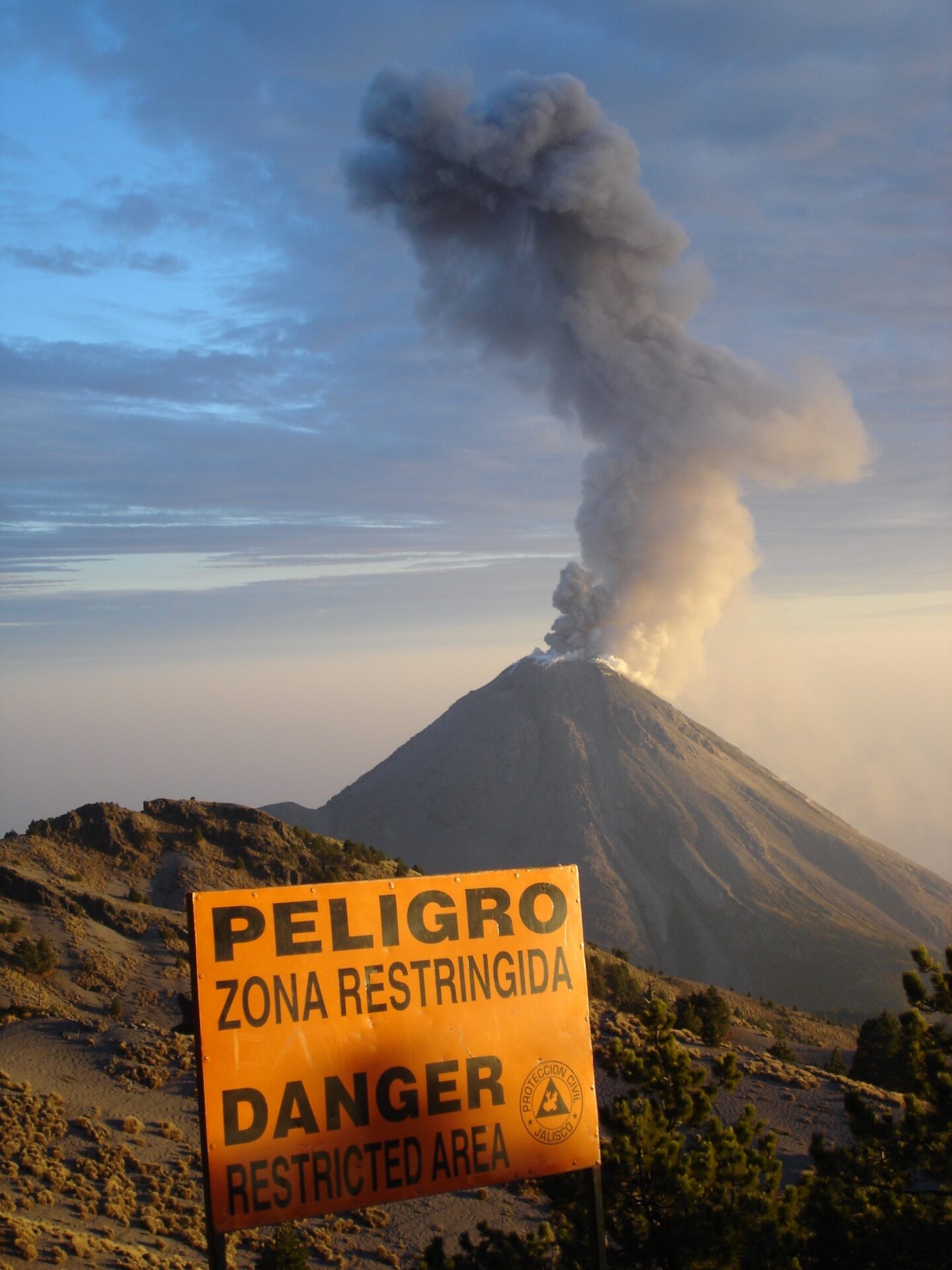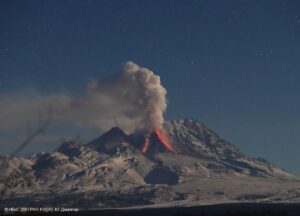Fast ascending basalts as eruption triggers of andesitic arc volcanoes- insights from Colima (Mexico) and Shiveluch (Kamchatka)

 Fast ascending basalts as eruption triggers of andesitic arc volcanoes- insights from Colima (Mexico) and Shiveluch (Kamchatka)
Fast ascending basalts as eruption triggers of andesitic arc volcanoes- insights from Colima (Mexico) and Shiveluch (Kamchatka)
Supervisors: Dr. Ivan Savov (earis@leeds.ac.uk) & Dr. Dan Morgan
Volcan Colima is the most active volcano in N. America. For example, since the arrival of the conquistadors (~1580) alone, it has erupted > 40 times. During the Holocene some eruptions were very large (Plinian) and produced vast pumice fall and thick and widespread PDC deposits with andesite composition (Savov et al., 2008; Luhr et al., 2010). Numerous small, basaltic and alkaline (high-K) cinder cones are outcropping on the flanks of the now active Volcan Colima edifice (elev. 3820m). These “exotic” magmas contain phlogopite and amphibole and have been shown to be mixing with the more felsic calc-alkaline arc magmas and possible links to Plinian activity have been suggested (Crummy et al., 2014, 2019).
Kamchatka is among the most volcanically active regions on Earth. It is currently hosting >20 active volcanoes and half dozen of them are erupting at the moment (Autumn’ 2024). Shiveluch volcano (elev. 3307m) is arguably the most active volcano in the region and its activity includes several recent (1956-1964, 2005-ongoing) and large volume Mt. St.Helens- style eruptions that have been extensively studied as they devastated vast areas around the volcano (Ponomareva et al., 2014). Much like Colima, among the erupted magmas there are unstudied basalts and basalt-andesites that are with high-K contents and contain phlogopite and amphibole. The last eruption of the volcano was Plinian and happen during the covid pandemic. As it has not been studied and volcanic ash samples are now available in Leeds, it will be primary target for this project.
We envision that mafic and possibly alkaline magmas at both of these “classical” calc-alkaline andesitic dome building stratovolcanoes are travelling very fast from their source in the mantle to the surface. As such they are maintaining their hot temperatures and importantly their high volatile contents (>6 wt% H2O). This is supported by the common for both volcanoes mica (phlogopite/chloritoid) and amphibole mineralogy. Our testable hypothesis is that, similarly to the Plinian 1991 Mt. Pinatubo eruption, the high-K mafic magmas can serve as triggers for large (Plinain) explosions. The deep primitive nature of the mantle sources and the (fast) ascent rates can be evidenced via geochemistry and petrology combined with recently developed geo-speedometry techniques employing the Fe-Mg diffusional exchange in well characterised mafic crystals (olivine, pyroxenes).
This project will concentrate on the use of trace element and B and Sr isotope geochemistry as widely used tracers of magmatic source composition, as well as magma mixing, storage and degassing. These results will be combined with mineral chemistry on selected end-member scoria samples for petrological and diffusion modelling to determine the speed of emplacement of deeply sourced and hot alkaline magmas. Ultimately the new dataset will lead to establishing novel links between the composition of the magmatic source(s), the speed of magma emplacement and the role of crustal storage and eruptability of the selected stratovolcanoes. The above techniques are all well established in Leeds (Crummy et al., 2014; Hartley et al., 2016) and many mafic tephra samples rich in olivine and pyroxenes are already available. It is expected that further fieldwork in the vicinity of volcan Colima will take place in 2025 and/or 2026.
The student will join two active research groups of the Institute of Geophysics & Tectonics (IGT): the Rocks, Melts and Fluids and the Volcano Studies Research Clusters (more info on group members and current projects can be found here: http://www.see.leeds.ac.uk/research/igt/high-temperature-geochemistry/ and also here: http://www.see.leeds.ac.uk/research/igt/high-temperature-geochemistry/). Training of in-situ mineral chemistry via EPMA/LA-ICP-MS techniques, as well as isotope ratio determination via TIMS and MC-ICP-MS instruments will be provided in- house and/or in the labs of our long-term research partners and collaborators at CNR-IGG Labs (Pisa, Italy).
References:

Savov, I. P., Luhr. J., Navarro, C., 2008. Petrology and mineralogy of lava and ash erupted from Volcán Colima, México, during 1999-2005, Journal of Volcanology and Geothermal Research, 174, 4, 241-256.
Crummy, J., Savov, I.P, Navarro-Ochoa, C., Morgan, D., Wilson, M., 2014. High-K mafic Plinian eruptions of Volcán de Colima, México, J.Petrology 55 (10). 1-18
Luhr. J., Navaro, C., Savov, I. P., 2010. Tephrochronology, petrology and geochemistry of Late-Holocene pyroclastic deposits from Volcán de Colima, Mexico, Journal of Volcanology and Geothermal Research 197, 1-32.
Crummy, J., Savov, I. P., Connor, C., Connor, L., Loughlin, S., Navarro-Ochoa, C., 2019. Challenges of determining eruption frequency and magnitudes even with an unprecedented stratigraphy, J.Applied Volcanology 8:3, https://doi.org/10.1186/s13617-019-0083-7
Hartley ME, Morgan DJ, Maclennan J, Edmonds M, Thordarson T. 2016. Tracking timescales of short-term precursors to large basaltic fissure eruptions through Fe–Mg diffusion in olivine. Earth and Planetary Science Letters. 439, pp. 58-70
Ponomareva, V., Kyle, P., Pevzner, M., Sulerzhitsky, l., Hartman, M., 2014. Holocene Eruptive History of Shiveluch Volcano, Kamchatka. In: Volcanism and Subduction: The Kamchatka Region, Geophysical Monograph Series 172, 10.1029/172GM19
Training and Support:
The wide range of techniques to be used require a multidisciplinary training and approach, which will be covered by the wide range of facilities available in one of the leading schools for petrology and geochemistry in the UK and Europe- Leeds School of Earth and Environment. The student will be based in Leeds, where s/he will be able to interact with large and very active research groups in the broad fields of Volcanology and High-T geochemistry.
